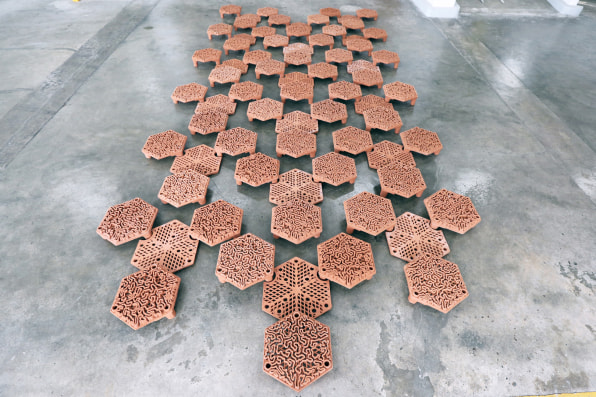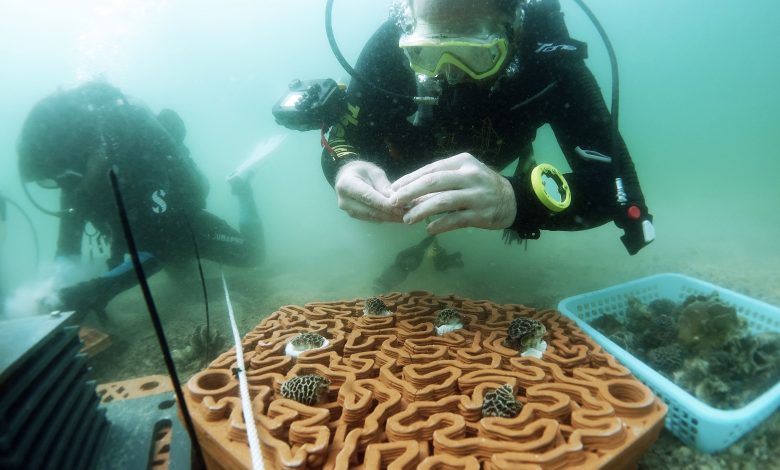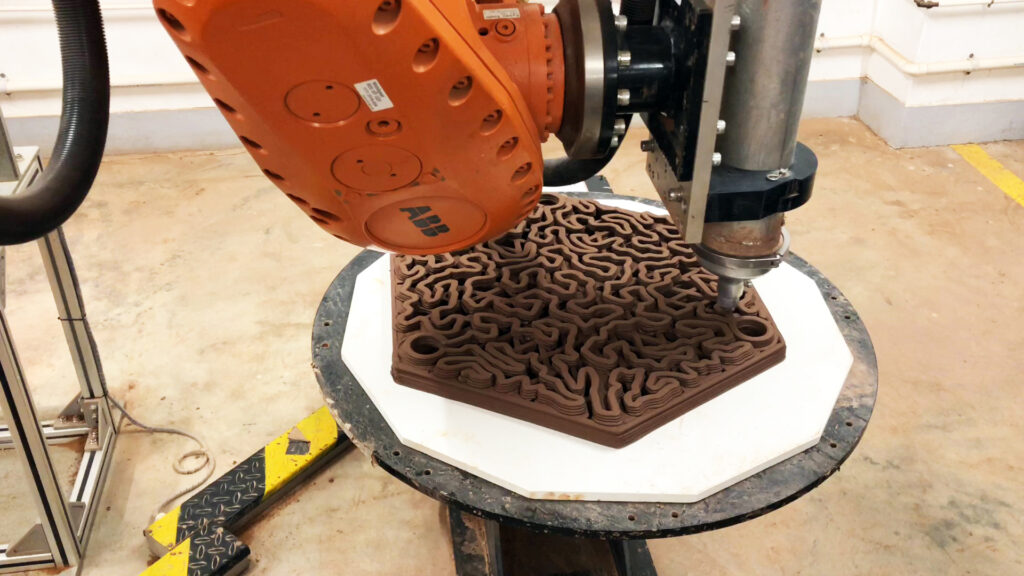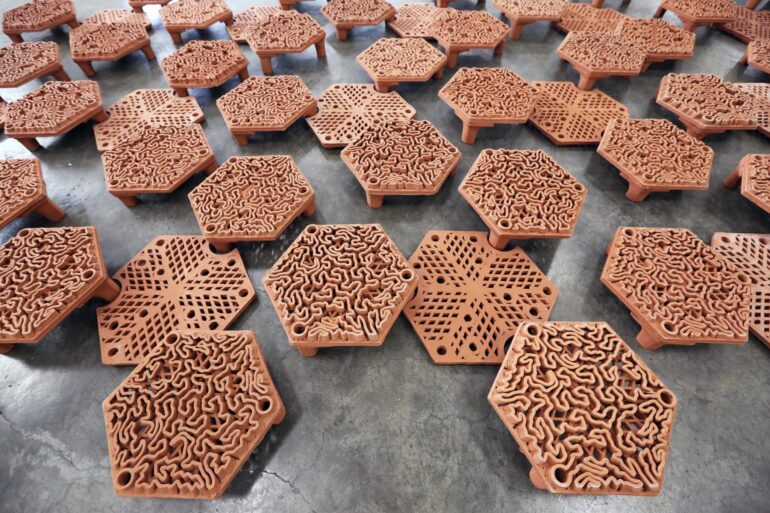Marine scientists and architects from the Swire Institute of Marine Science (SWIMS) of the University of Hong Kong (HKU) and its Robotic Fabrication Lab of the faculty of architecture have created a novel 3D print terra-cotta tiles that will act as artificial reefs. Each tile is around two feet (60cm) in diameter and can be linked together to cover large reef areas.

Coral has declined up to 80% in some areas around Hong Kong such are Double Island and Sai Kung, over the past decade. The new coral tiles will be used in these area to help restore coral population, create new substrate and attract tourism.
The team placed tiles seeded with coral fragments over a 430-square-foot area across three sites within Hoi Ha Wan Marine Park in Hong Kong this past July and will monitor coral growth over the next two years. This is just the beginning of the project: The team plans to develop new tile designs and further expand seabed restoration in the area.

The robotic 3D printing process offers unique advantages in the design and production of artificial reefs, according to team leader Christian Lange. It makes production easier and more efficient, by allowing the team to create large pieces in a short amount of time.
It also enabled the team to make tiles with different designs and functions, something that wouldn’t be possible with a typical mold. To do this, the team 3D printed terra-cotta clay into the reef tile pattern and fired it to 2,057 degrees Fahrenheit to produce the 128 tiles they’ve made so far.

Terra-cotta is a highly porous material with “nice surface micro-texture” for marine organisms to attach and is an eco-friendly alternative to conventional materials such as cement or metal.
“Though these tiles could be produced with other methods, such as making a double-sided mold, it would be quite complex to do since the design of the tile is very three-dimensional,” Lange says. “3D printing offers the advantage to produce objects and parts much more cost-effectively. But the most powerful advantage of it is that it could print each object with a different design without increasing the cost.” This way, they can design tiles that have different functions without incurring significant additional costs.
While all the coral tiles are identical in this pilot study, the team will use different designs in the next iteration to figure out how they affect the species. The designs can also be specific to the environment and underwater conditions where they are placed; for instance, the team designed these tiles to prevent sedimentation buildup, a major problem in Hong Kong waters. [Phys.org]



